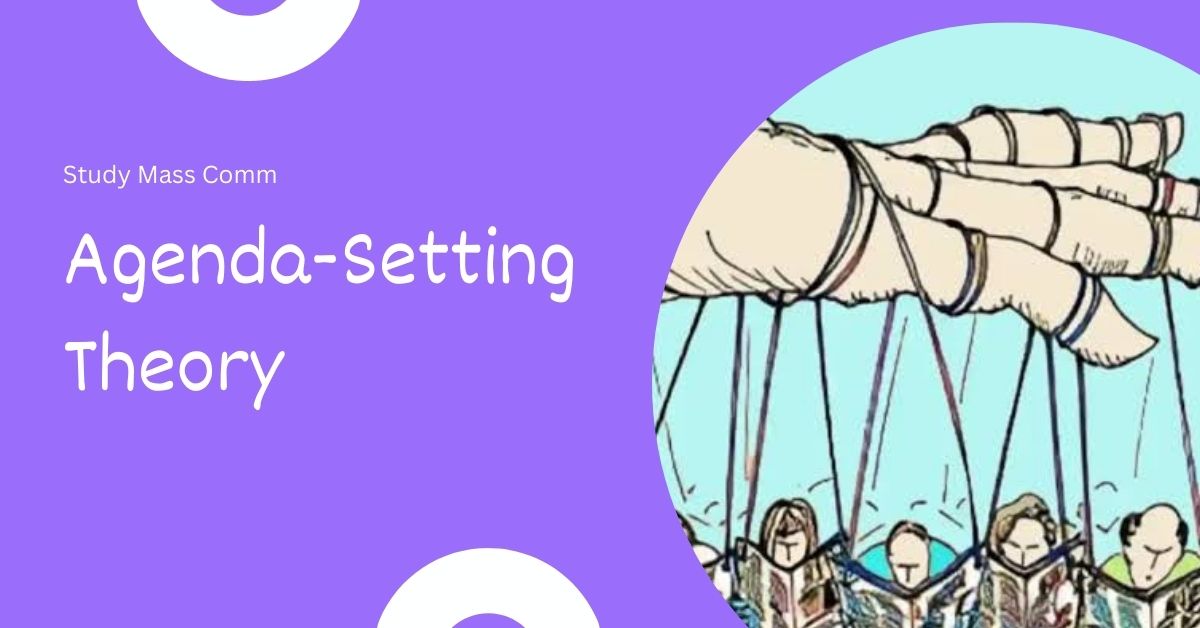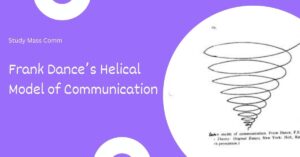Agenda setting describes a very powerful influence of the media – the ability to tell us what issues are important. In the 1970s Maxwell McCombs and Donald Shaw took a different direction when they looked at the effects of gatekeepers’ decisions. They found the audience attaches how much importance to give to a news item from the emphasis the media places on it. McCombs and Shaw pointed out that the gatekeeping concept is related to the newer concept, agenda-setting. It is the mass media that sets the ‘agenda’ of any event like an election campaign. Media determines the important issues to be followed by the audience in an event.
The idea of agenda-setting was first presented by Walter Lippmann in his 1922 book, Public Opinion, where he argues that the mass media are the principal connection between events in the world and the images in the minds of the public. He said that average people simplified the complex environment and events into simple “pictures” in their minds and they could not be trusted to make political decisions based on them.
Taking clue from Lippmann, in 1963, Bernard Cohen observed that the press “may not be successful much of the time in telling people what to think, but it is stunningly successful in telling its readers what to think about. And it follows from this that the world will look different to different people,” Cohen continues, “depending not only on their personal interests but also on the map that is drawn for them by writers, editors, and publishers of the paper they read.” Cohen took a mass society perspective and revised it to make it compatible with limited-effects perspective. Cohen’s idea later led to formalization of agenda-setting theory by McCombs and Shaw.
McCombs and Shaw interpreted agenda setting as, “In choosing and displaying news, editors, newsroom staff, and broadcasters play an important part in shaping political reality. Readers learn not only about a given issue from the amount of information in a news story and its position…The mass media may well determine the important issues–that is, the media may set the ‘agenda’ of the campaign.”
Agenda-setting theory describes the ability of the news media to influence the importance of topics on the public agenda. Agenda setting theory predicts that if a news item is covered frequently and prominently, the audience will regard the issue as more important.
In the 1968 “Chapel Hill study”, McCombs and Shaw demonstrated a strong correlation coefficient between what 100 residents of Chapel Hill, North Carolina thought was the most important election issue and what the local and national news media reported was the most important issue. By comparing the salience of issues in news content with the public’s perceptions of the most important election issue, McCombs and Shaw were able to determine the degree to which the media determines public opinion.
Agenda-setting describes the way that media attempts to influence viewers, and establish a hierarchy of news prevalence. Agenda-setting is the creation of public awareness and concern of salient issues by the news media. Two basic assumptions underlie most researches on agenda-setting: first, the press and the media do not reflect reality; they filter and shape it and second, the media concentration on a few issues and subjects leads the public to perceive those issues as more important than other issues.
One of the most critical aspects in the concept of an agenda-setting role of mass communication is the time frame for this phenomenon. In addition, different media have different agenda-setting potential.
Types of agenda-setting
The research on the effect of agenda setting compares the salience of issues in news content with the public perceptions of the most important issue, and then analyses the extent of influence by guidance of the media. There are three models assumed by Max McCombs: the awareness model, the priorities model and the salience model.
Most investigations are centered on these three models. In the research, the dependent variables are media agenda, audience agenda and policy agenda as listed in the following part. Rogers and Dearing identify three types of agenda setting:
- Public agenda setting, in which the public’s agenda is the dependent variable (the traditional hypothesis)
- Media agenda setting, in which the media’s agenda is treated as the dependent variable (“agenda building”)
- Policy agenda setting, in which elite policy makers’ agendas are treated as the dependent variable (“political agenda setting”)
Rogers and Dearing argue that mass communication research, has focused a great deal on public agenda setting and media agenda setting, but has largely ignored policy agenda setting, which is studied primarily by political scientists. As such, the authors suggest mass communication scholars pay more attention to how the media and public agendas might influence elite policy maker’s agendas i.e., where the policy makers get their news from and how this affects their policies.
Learn More: Helical Model of Communication
Limitations of Agenda setting theory
Agenda Setting Theory suffers from certain limitations as the media effects theory seems well suited for election campaigns and news but not for other types of content. The theory based on causation can easily be turned around and it can be argued that it is the audience that picks the agenda and media simply responds to the public opinion. Although the theory suffers from many limitations it has inspired further research and is relevant today.
Source: Odisha State Open University



